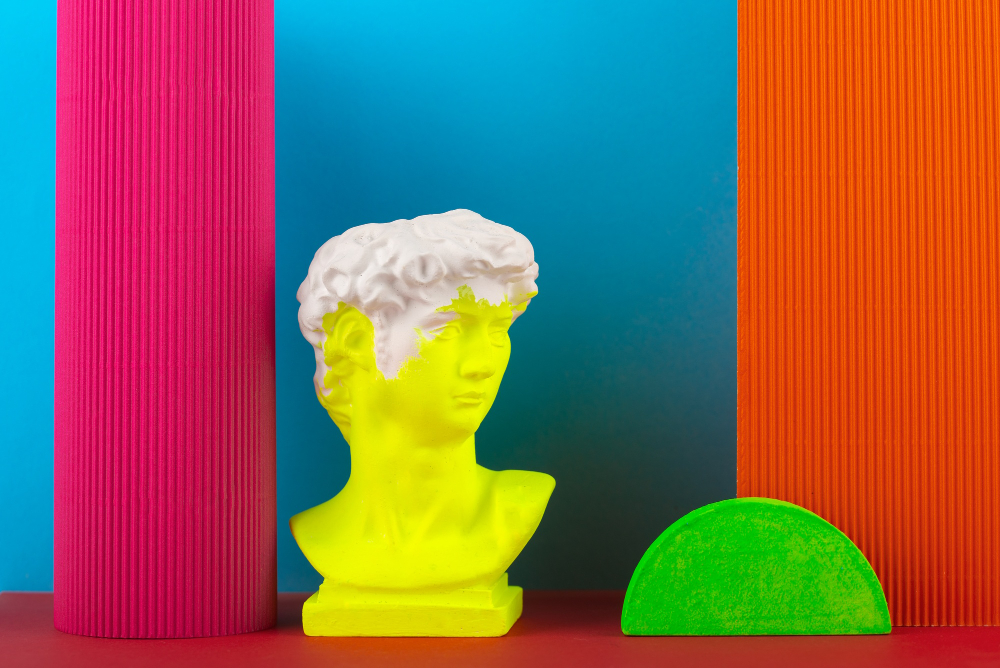As the art world transitioned from Abstract Expressionism, artists like Robert Rauschenberg and Jasper Johns began questioning traditional artistic standards. They became leading figures in the Neo-Dada movement. It helped them erase the lines between everyday life and art.
This article takes a deep dive into the revolutionary art of Neo-Dada, examining how Rauschenberg and Johns led the charge and what their lasting impact has been.
What is Neo-Dada?
Coined in the late 1950s, the term Neo-Dada fuses elements of original Dadaism with more modern concerns and techniques. Dadaism tried to change what we consider art by focusing on the weird and illogical. Neo-Dada takes this further by using modern art-making methods and questioning established art rules.
Artists like Rauschenberg and Johns found new ways to bring everyday objects into art. These artists transformed these objects into icons with deep symbolic meaning. Their work has set the foundation for later movements like Pop Art and Conceptual Art.
Robert Rauschenberg: The art of assemblage
Rauschenberg gained fame with his ‘Combine’ paintings. He used non-traditional materials and objects to create hybrid works. They blurred the line between painting and sculpture. He gathered things from New York City streets, like tires, bed quilts, and newspapers, and included them in his art. This way, he raised questions about the sanctity of art materials and disrupted conventional definitions of what constitutes art.
In his well-known art piece ‘Erased de Kooning Drawing,’ Rauschenberg erased a drawing by Willem de Kooning. By doing so, he made the act of erasing into a way of making new art. This sparked more discussions about what it means to create art and who gets to be called its creator.
Jasper Johns: flags, maps, and numbers
Jasper Johns distinguished himself through his paintings of American flags, maps, and stencilled numbers. On the surface, these paintings could look straightforward, but they often contained various textures and techniques that gave them depth. Johns’ use of encaustic, a mixture of paint and hot wax, offered a tactile quality. It invited viewers to contemplate the work up close.
Johns did not just paint flags; he painted ‘paintings’ of flags. The difference lies in the added layer of meta-commentary. His work sparked dialogues about nationalism, representation, and the essence of painting itself.
What is the lasting impact of Neo-Dada?
The contributions of Rauschenberg and Johns to the Neo-Dada movement are still resonating in various art circles and academic discussions today. They did not just change the art of their time. They created a ripple effect that has influenced numerous art movements and individual artists long after them. Their work has inspired explorations in different artistic mediums.
Rauschenberg and Johns laid the groundwork for subsequent art movements such as Pop Art, Conceptual Art, and Minimalism. Many artists drew inspiration from their innovative use of commonplace objects and imagery. Educational institutions also analyze their work, exploring its layers of meaning and its enduring relevance today.
Prominent museums like New York’s Museum of Modern Art and London’s Tate Modern feature their art. They often host Neo-Dada exhibits, proving the movement’s ongoing importance. Today’s young artists study their groundbreaking work for inspiration.
Conclusion
As you can see, Rauschenberg and Johns changed the course of modern art with their Neo-Dada creations. They questioned conventional art forms and forced us to look at everyday objects as potential art materials. Their impact continues reverberating in the art world, shaping our perceptions and expectations of what art can be.
So, what are you waiting for? Dive into the fascinating world of Neo-Dada art! We recommend you start with the works of these two incredible artists. The time to immerse yourself in this revolutionary art movement is now.
